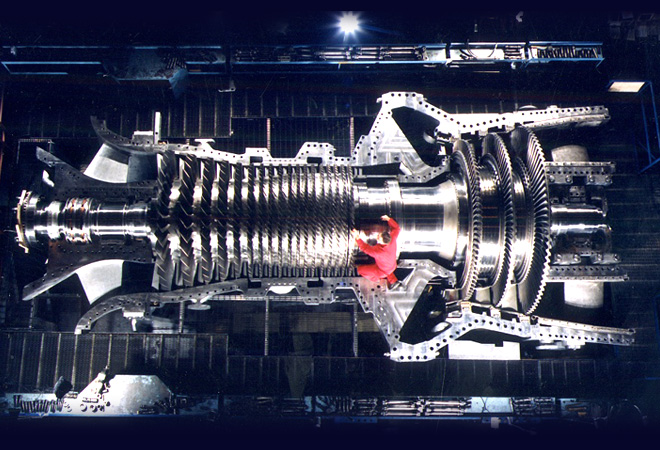
By 2015 parts of this turbine may well have been built by a 3D printer. Courtesy of GE.
Latest News
February 17, 2014
Big business’s reaction to additive manufacturing (AM) has been somewhat mixed. While some companies are still investigating the technology, others have jumped in with both feet. GE belongs to the latter category. The company signaled its interest in AM with the acquisition of Morris Technologies in 2012. That was followed up with the news GE Aviation intended to use 3D printing to build nozzles for its LEAP engine.
Continuously looking for ways to use AM, GE then announced it would be using cold spray to build and repair parts. With AM proving itself in other departments, GE Oil and Gas is also buying into AM to build fuel nozzles for gas turbines, and for rapid prototyping needs associated with pipeline inspection.

The move is part of a two-year plan to invest $100 million in technology development for GE Oil and Gas. AM is only part of the picture, but already dozens of 3D printers have been shipped out various locations. The AM systems involved include both metal and plastic 3D printers.
Metal fuel nozzles for use in gas turbines are currently under development, with a plan to launch a full production run later this year. Prior to the use of AM, the nozzles have been constructed by manufacturing a number of separate parts, then welding those parts together to create a finished nozzle. The complex shape required can be built in one stage using AM, saving GE both time and money.
Along with building nozzles, GE Oil and Gas is also investigating how 3D printing can be used to build electric submersible pumps to force oil to the surface, how AM can aid in general tool construction, and for the rapid prototyping of pipeline pigs.
To me, pipeline pigs sounds like some kind of new iOS app, but to GE Oil and Gas engineers it refers to robotic pipeline inspectors. Each pig must be custom built for the pipeline it will inspect, both in terms of size and in terms of the potential hazards it will encounter. Engineers use 3D printers to build prototypes of the pigs, or of parts of the pigs, before committing to a final design. The use of rapid prototyping has reduced turnaround time from 12 days to around 12 hours.
Below you’ll find a video about GE Oil and Gas.
Source: Reuters
Subscribe to our FREE magazine, FREE email newsletters or both!
Latest News
About the Author
John NewmanJohn Newman is a Digital Engineering contributor who focuses on 3D printing. Contact him via [email protected] and read his posts on Rapid Ready Technology.
Follow DE





